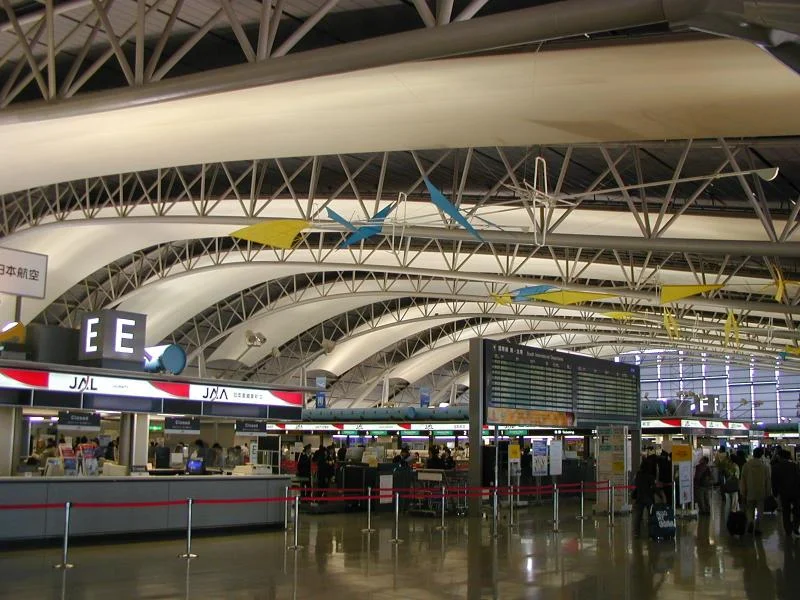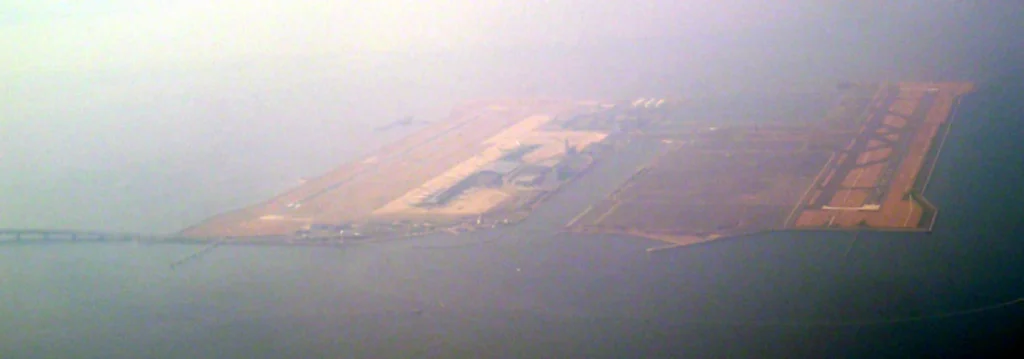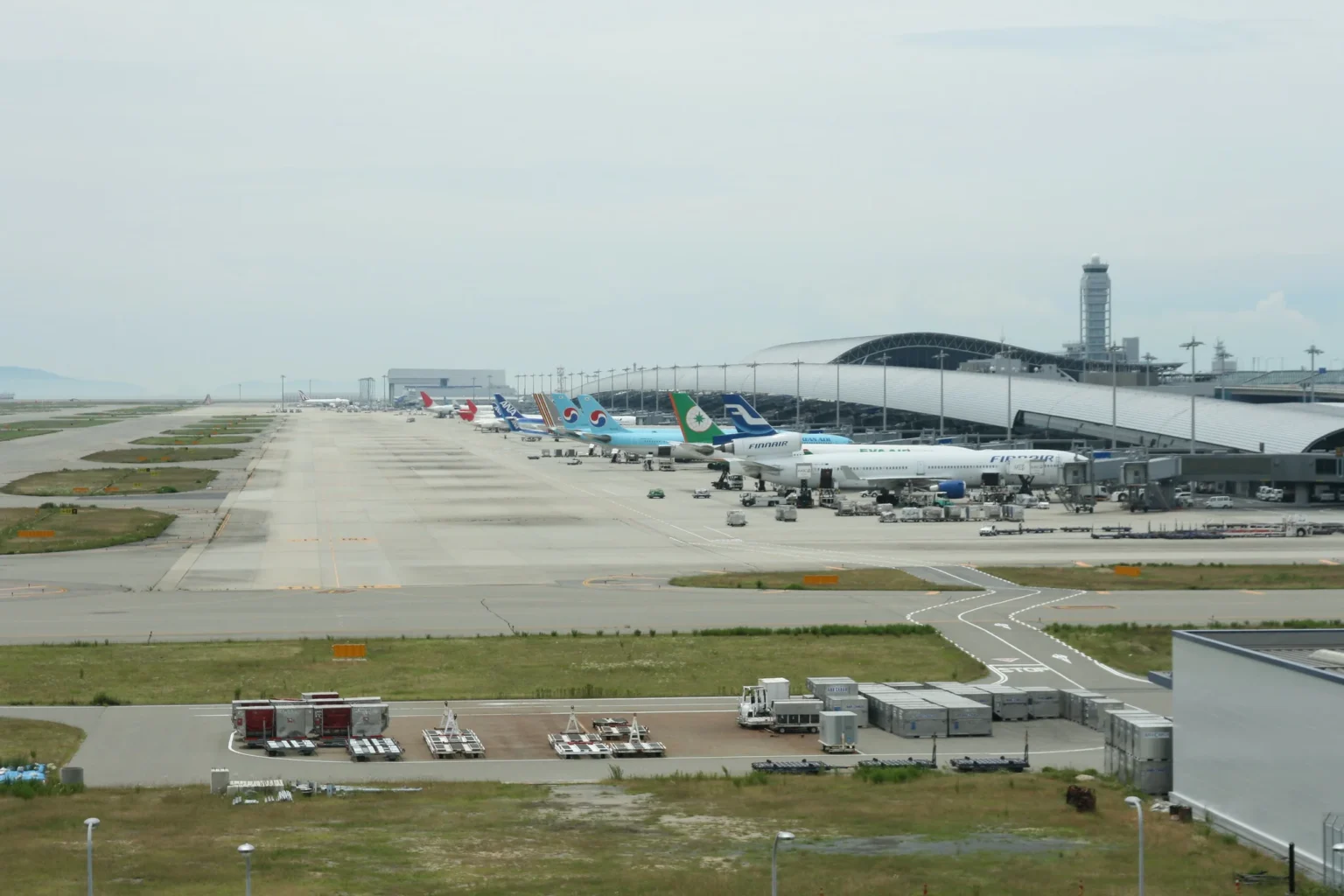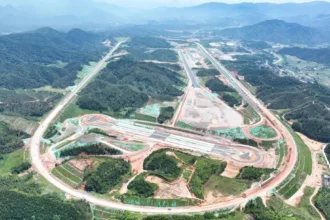Why the World’s Top Luggage Handling Airport Is Slowly Sinking into the Sea
Kansai International Airport in Japan, long praised for its world-class efficiency—especially its unmatched record in luggage handling—is facing a challenge it can’t out-organize: it’s slowly sinking.
Built in 1994 on two massive manmade islands in Osaka Bay, Kansai was a beacon of modern engineering. It was designed to solve the city’s overcrowded airport dilemma while avoiding the noise complaints and space limitations of inland expansion. But today, beneath the sleek terminals and busy runways, the very ground it’s built upon is collapsing under its own weight.

From Marvel to Mayday
At the time of its construction, Kansai International was hailed as an architectural and logistical triumph. With a project cost of approximately £14 billion, it was expected to settle—i.e., sink—about 13 feet over the course of 50 years. However, reality has defied those estimates.
Just three years into construction, the artificial island had already sunk 27 feet—eight feet more than predicted. As of today, Kansai has sunk over 42 feet, and while engineers have slowed the rate of descent, the problem is far from solved.
Why Is It Sinking?
The answer lies in geology. The airport is built atop soft, waterlogged clay that compresses under the weight of the reclaimed land and buildings. Engineers had anticipated some settling and installed vertical sand drains to manage the sinking process. But the magnitude and speed of subsidence were beyond what laboratory models had predicted.
In technical terms, the soft clay base is undergoing “consolidation”—a gradual compression that squeezes water out of the soil and causes it to compact. This process is irreversible and, unfortunately for Kansai, still very active.

Record-Setting Efficiency vs. Relentless Earth
Despite these subsidence issues, Kansai continues to shine in one area: efficiency. In 2024, the airport was once again recognized as the world’s best airport for luggage handling, maintaining a perfect record of zero lost luggage over the past decade. That feat alone draws admiration from travelers worldwide.
In 2023, Kansai handled nearly 26 million passengers and close to 170,000 flights, numbers that are fast approaching its pre-pandemic peak.
Climate Change: The Silent Threat
Even as subsidence slows—down to 2.3 inches a year by 2023 from a terrifying 19 inches annually in its early years—the risk isn’t over. Rising sea levels and extreme weather caused by climate change pose an escalating danger.
Typhoon Jebi in 2018 was a stark wake-up call. The airport was partially submerged, one runway was rendered inoperable, and a tanker crash damaged the only bridge to the mainland. More than 5,000 passengers were stranded and had to be evacuated by boat.
To protect against future surges, the seawall surrounding the airport was raised by an additional 2.7 meters. Authorities have also invested heavily—more than £112 million—to reinforce the infrastructure and ensure operations can continue.
A Race Against Time
Despite these interventions, the clock is ticking. Experts now warn that if subsidence continues, parts of the airport could fall below sea level by 2056. The concern is not only about rising water but also the cumulative pressure of years of settlement.
Japan’s seismic activity adds to the vulnerability. Though Kansai’s runways were designed with earthquake resistance in mind, the combined pressures of tectonics, typhoons, and terrain may one day outmatch even the most thoughtful engineering.
What’s Next for Kansai?
The sinking airport is a cautionary tale about the balance between ambition and nature. Engineers continue to innovate, installing millions of sand-filled vertical drains and exploring new ground-reinforcement technologies. The goal now is to preserve Kansai’s functionality for as long as possible.
Still, some in Japan’s engineering community have expressed frustration, calling the situation a “predictable failure” rooted in overconfidence and miscalculations. Critics say that while the vision was grand, the realities of geology and climate should have been more seriously considered.
A Legacy in Question
Kansai International Airport stands today as both a remarkable achievement and a reminder of the risks inherent in pushing boundaries. It solved one problem—urban overcrowding—only to inherit others that now demand constant vigilance and resources.
Whether Kansai can remain above water—literally and figuratively—will depend on Japan’s ability to adapt its infrastructure to the evolving demands of climate, science, and sustainability. Until then, every flawlessly delivered suitcase is a symbol of human excellence… standing atop a slowly shifting foundation.













